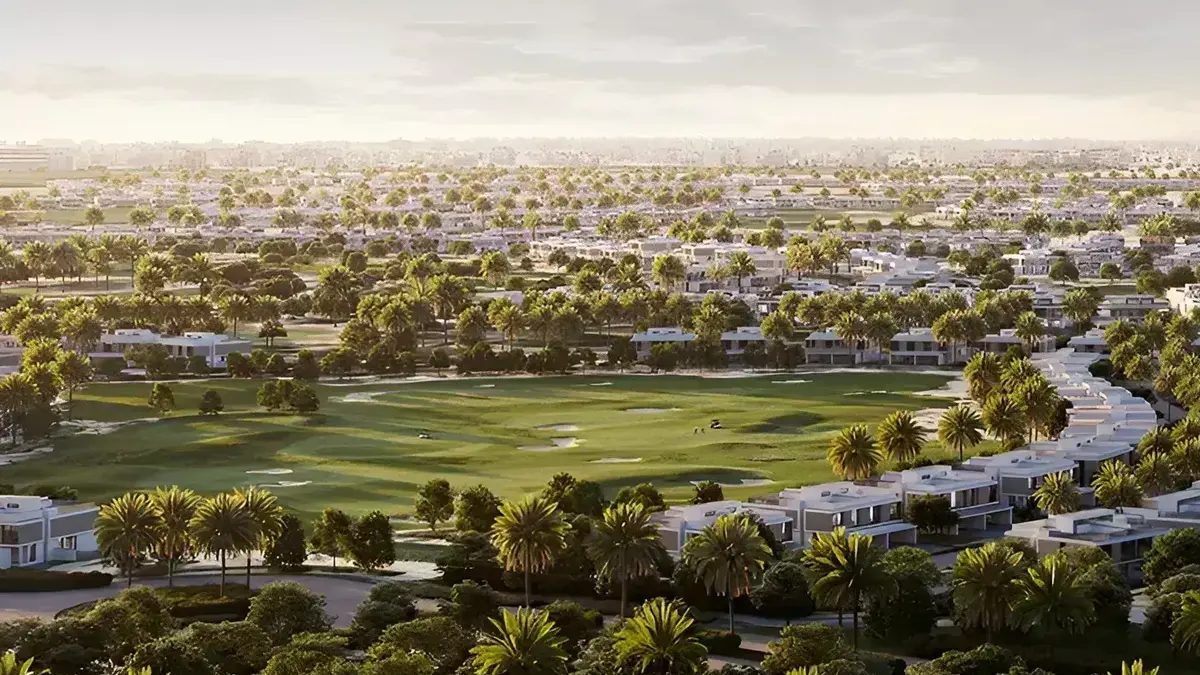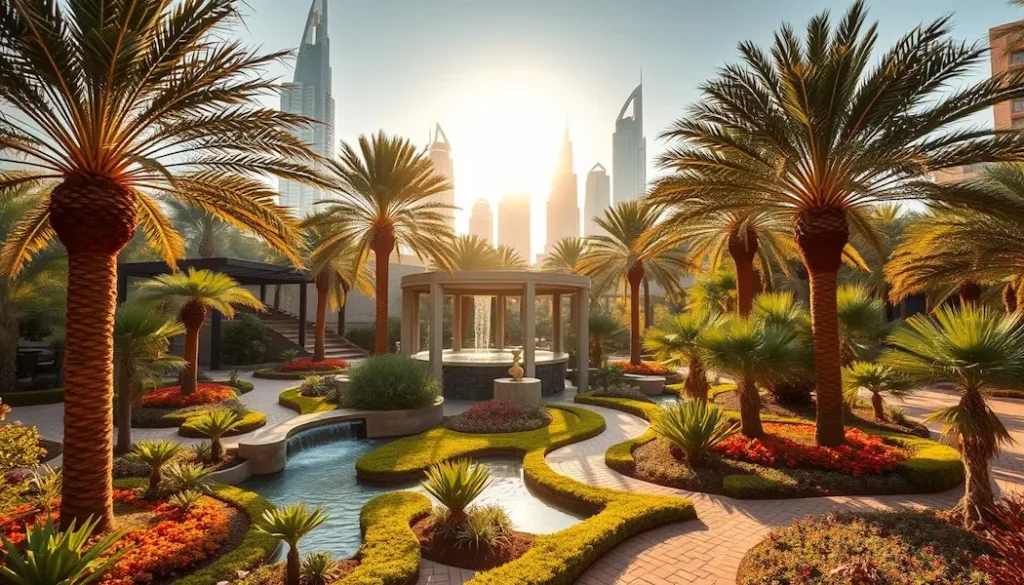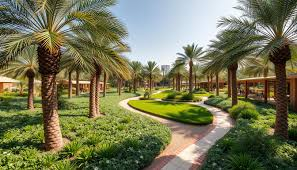
In the heart of the desert, a green revolution is blossoming. The United Arab Emirates (UAE), known for its luxury lifestyle and iconic skylines, is now making waves in a different way through sustainable landscaping. As climate challenges and water scarcity intensify, the country is embracing eco-friendly gardening and green infrastructure to reshape its public and private spaces.
Sustainable landscaping in the UAE is more than a trend. It is a necessity. With temperatures rising and natural resources under pressure, this movement is proving that lush, beautiful landscapes don’t have to come at the expense of the environment.

Sustainable landscaping focuses on creating outdoor spaces that require fewer resources, conserve water, and support native ecosystems. This means using drought-tolerant plants, smart irrigation systems, recycled materials, and design strategies that blend with the natural environment.
In the UAE, where water is scarce and soil quality can be poor, traditional landscaping methods can be both costly and harmful. Sustainable landscaping offers a solution that is environmentally responsible and economically smart.
The UAE government has shown strong commitment to sustainable development. The UAE Vision 2030 and various emirate-level sustainability initiatives have encouraged green building practices, including landscaping. Projects like Dubai’s Sustainable City and Abu Dhabi’s Estidama Pearl Rating System promote eco-friendly design, encouraging developers to include native plants and efficient water systems in their plans.
In fact, many government projects now require sustainable landscaping as part of their construction and design permits. The emphasis is on reducing water use, increasing biodiversity, and creating pleasant urban spaces for residents and visitors alike.
Several key trends are defining the green movement across UAE cities:
1. Native and Drought-Tolerant Plants:
Using plants that are adapted to the local climate reduces the need for constant watering. Ghaf trees, desert palms, and native grasses are now popular choices in residential and commercial projects.
2. Smart Irrigation Systems:
Advanced irrigation technologies are helping save water. Drip irrigation, soil moisture sensors, and weather-controlled systems ensure that plants receive just the right amount of water at the right time.
3. Green Roofs and Vertical Gardens:
Urban buildings in Dubai and Abu Dhabi are now featuring rooftop gardens and living walls. These not only improve air quality but also help in cooling buildings naturally, reducing energy use.
4. Permeable Paving and Rainwater Harvesting:
Instead of traditional concrete, permeable paving allows rainwater to soak into the ground, reducing runoff and improving groundwater recharge. Some developments are also installing systems to capture and reuse rainwater for irrigation.
5. Recycling and Reusing Materials:
From recycled wood to reclaimed stone, sustainable landscaping in the UAE often includes eco-friendly materials that reduce the environmental impact of construction.
UAE homeowners are also joining the movement. Landscaping companies now offer eco-conscious packages for villas and residential communities. These include solar-powered garden lighting, edible gardens, and low-maintenance plant selections that thrive in the Gulf’s arid climate.
The appeal is growing not just for environmental reasons but also for cost savings. Reducing water and energy consumption leads to lower utility bills over time, making sustainable landscaping an attractive option for property owners.
The demand for sustainable landscaping has also created new job opportunities and industry growth. Landscape architects, horticulturists, and irrigation experts with knowledge of eco-friendly practices are increasingly in demand. UAE universities and training institutes are offering specialized programs in environmental design and green infrastructure, preparing the next generation of professionals.
Green landscaping companies are also expanding their services, from eco-consulting to full-service maintenance of sustainable gardens and parks.
Beyond aesthetics and savings, sustainable landscaping has a positive impact on community health and the environment. Green spaces help reduce urban heat islands, improve air quality, and provide habitats for birds and insects. They also support mental well-being, offering residents calm and beautiful environments for relaxation and recreation.
In desert cities like Dubai and Sharjah, these green oases are not just decorative—they are essential for improving the quality of life.
Despite the progress, sustainable landscaping in the UAE faces some challenges. Public awareness is still growing, and many developers continue to use traditional landscaping methods due to familiarity or lower initial costs. Education campaigns and stronger enforcement of green building codes will be key to ensuring widespread adoption.
There is also a need for more research into native species and local soil conditions to improve planting strategies and long-term garden health.

As the UAE continues to prioritize sustainability, the role of landscaping will only become more important. Green urban design is expected to be a central feature of future developments, from mega-projects like Dubai Creek Harbour to smaller community parks.
With innovation, collaboration, and government support, the UAE is proving that even in the middle of a desert, it is possible to grow a greener, more sustainable future.
Sustainable landscaping in the UAE is reshaping how cities look and feel. By combining modern technology with traditional knowledge of desert ecosystems, the country is leading the way in green design. Whether you’re a homeowner, developer, or policymaker, sustainable landscaping offers benefits for everyone and for the planet.
Read More:- Deyaar’s Latest Announcement Shakes Up the UAE Property Market
